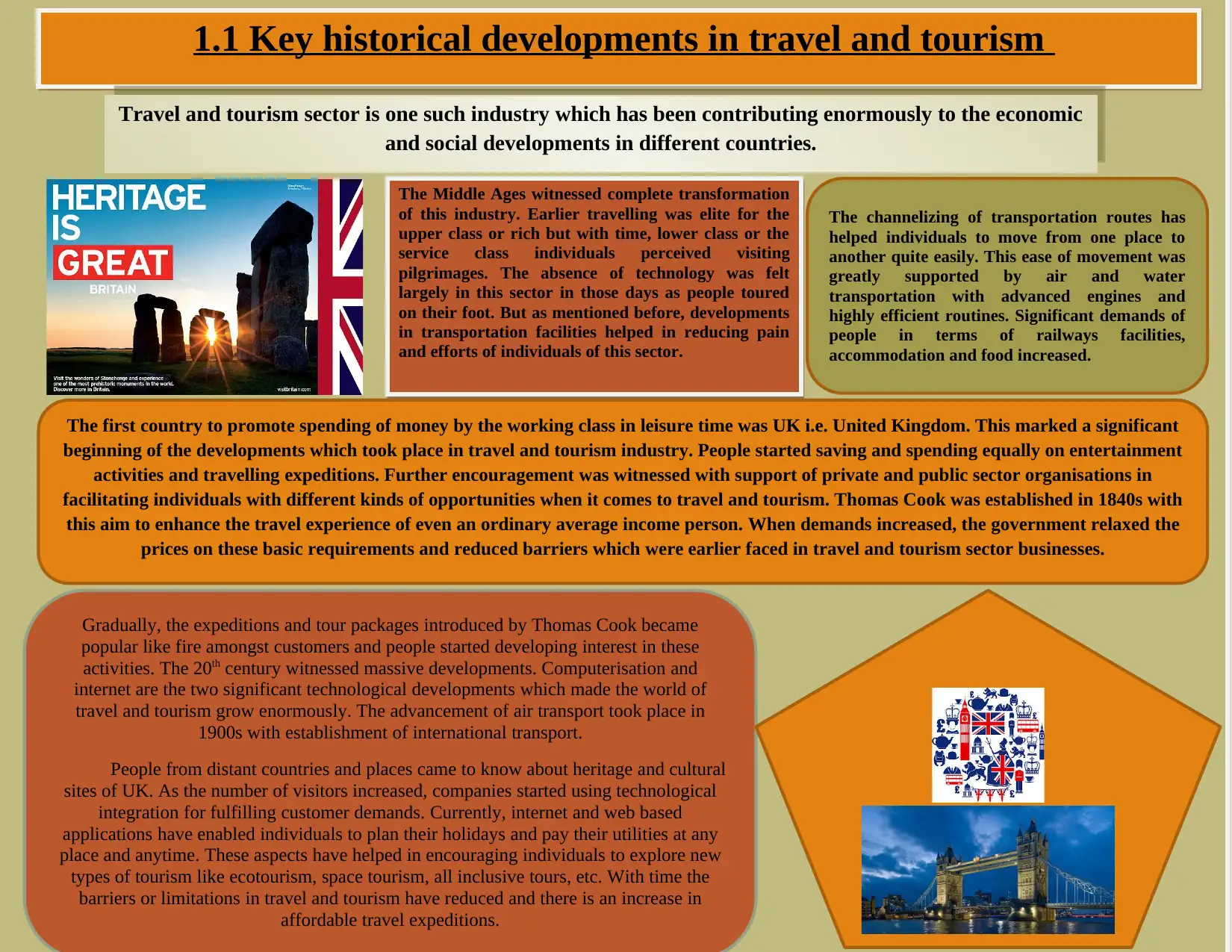Unit 1: Travel and Tourism Sector - Historical Development Report
VerifiedAdded on 2023/04/03
|1
|586
|248
Report
AI Summary
This report examines the historical developments in the travel and tourism sector, starting from early travel and cultural exchange. It traces the evolution through the Middle Ages, highlighting the impact of transportation advancements, such as railways and air travel, and the role of key figures like Thomas Cook. The report discusses the influence of technological developments, including computerization and the internet, which have reshaped the industry and expanded tourism options, such as ecotourism and all-inclusive tours. The analysis covers the sector's growth, impact on host communities, and the influence of national and international policies. It also addresses the effects of political changes and the increasing affordability and accessibility of travel expeditions.







![[object Object]](/_next/static/media/star-bottom.7253800d.svg)